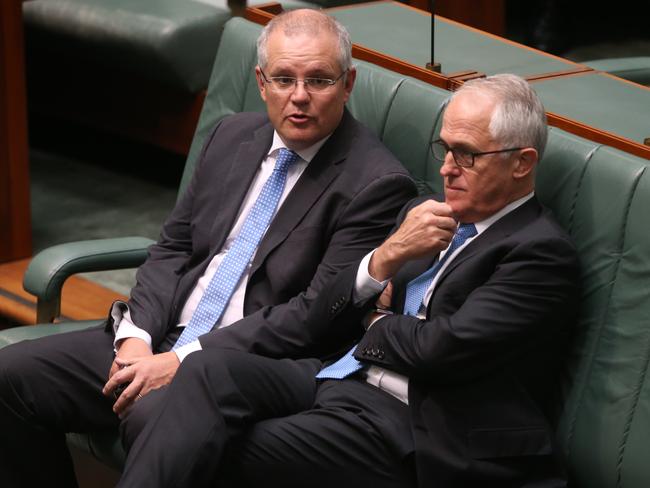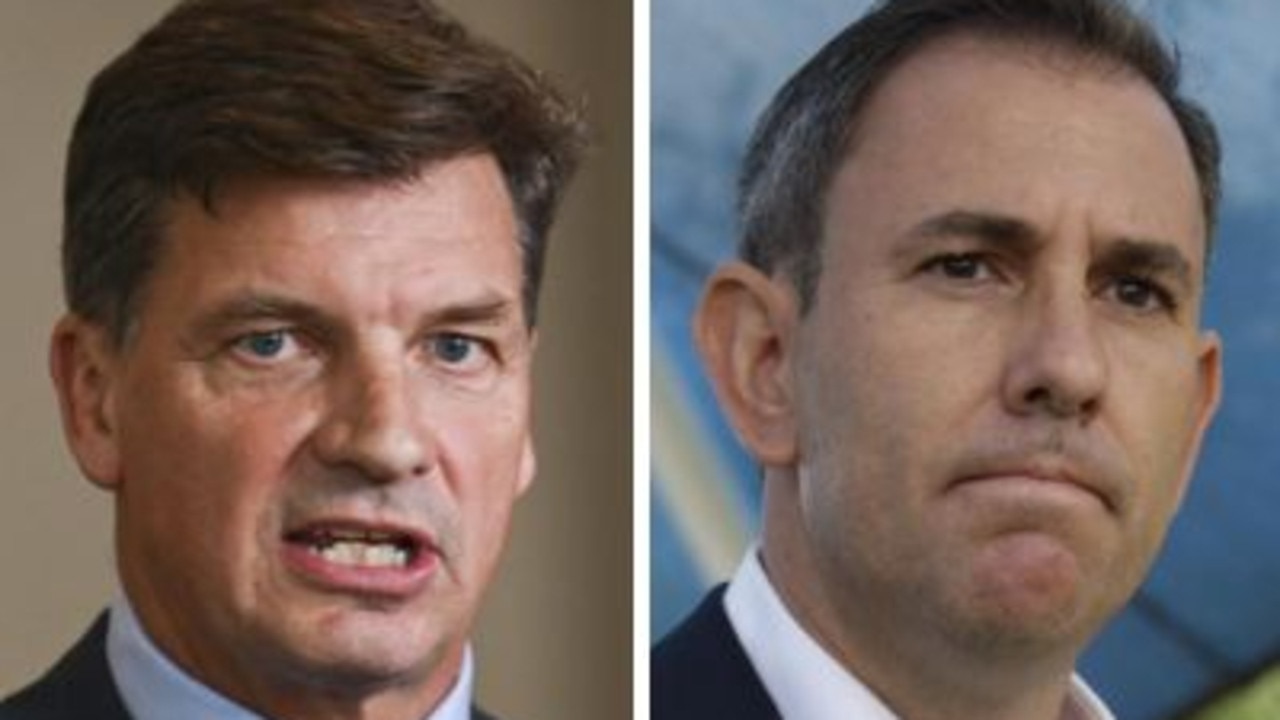Graph shows the difference between government Budget forecasts, and what really happened
EVERY year, Australia’s politicians make the same promise. This graph shows why you can’t trust a word they tell you.
Fed Budget
Don't miss out on the headlines from Fed Budget. Followed categories will be added to My News.
POLITICIANS have been promising to get the budget into surplus for years but despite their optimistic forecasts, Australia still looks like it’s a long way from being back in the black.
Australia has not had a surplus since 2007-08 when the Rudd Government spent heavily to insulate the country’s economy against the global financial crisis.
Since then, successive governments have released estimates of when the budget would be returned to surplus but each year this date has been pushed further back.
The 2010-11 budget suggested Australia would be in surplus again in 2012-13 — five years ago.
The Turnbull Government now expects this to happen in 2020-21.
UNSW economist Tim Harcourt, host of The Airport Economist, said forecasting was a pretty tough gig and he thought people should lower their expectations.
“I don’t know why we think we should get it right,” he told news.com.au.
He said budgets could be impacted by external shocks, such as the global financial crisis and things like demographics could also change very quickly.
As for why Australia’s predictions are so wrong, Mr Harcourt believes it’s partly because of the big structural changes that are taking place in the global economy.
“The rise of digital disruption is really shaking up retail and media,” he said.
“That’s why you’ll see good economic growth and company profits but also timid consumer behaviour, because wages are low and households are feeling the pinch.”
Politicians have also blamed the fall in prices for resources like coal but Mr Harcourt believes, if anything, the strength of the resources boom went for a lot longer than people expected.
“I think most economists predicted that, although it always comes off more severe than we expect.”
Mr Harcourt also warned against people’s obsession with surpluses and said it was OK to have a deficit if the money was being used to invest in infrastructure and productive assets, as this would increase tax revenue in the future.
“What is important is to have a low unemployment rate and low inflation rate — which we do at the moment,” he said. “Wages are a bit low but there is job growth.”
He said the main job of politicians was to ensure people are employed and they are prosperous.
“I think I would prefer a politician who ducked a global financial crisis than one who maintained a surplus but wreaked a lot of damage.”

Treasurer Scott Morrison insisted the Turnbull Government’s budget was on the right track while releasing the midyear budget review this week.
Mr Morrison is sticking to his promise of a budget surplus by mid-2021 and expects it will be around $10.2 billion — almost $3 billion larger than previously forecast.
And for this financial year, Mr Morrison is predicting a smaller deficit of $23.6 billion compared to the previous estimate of $29.4 billion.
The budget position had improved by $9.3 billion over the four-year budget forecast period since May, largely driven by stronger-than-expected company tax collections and enforcement activity by the Australian Taxation Office. Government debt will also be $23 billion lower than previously forecast over the same time frame.
“As we push into the new year, there is still more work to be done but we are on the right track,” Mr Morrison told reporters in Canberra.
His Labor counterpart Chris Bowen said the Treasurer wanted a “gold star and a pat on the back” for debt being $23 billion lower, even though it continues to rise under the Coalition.
Government debt presently sits at $517 billion and is set to rise to $591 million by 2019/20.
“The global economy is in the best nick it has been in for probably 10 years and so the government has absolutely no excuses for this record and growing debt on their watch,”
Labor’s finance spokesman Jim Chalmers told reporters in Sydney.
Mr Morrison flagged personal income tax cuts will be announced for middle-income earners in the May budget as long the government can stick to a clear set of parameters.
“That is no risk to the fiscal position of the government, no risk to our triple-A credit rating, ensuring we maintain our path back to balance,” Mr Morrison said.
However, Treasury’s 2017/18 economic growth forecast was trimmed to 2.5 per cent from 2.75 per cent at the May budget, reflecting modest growth in household consumption.
Growth is expected to accelerate to three per cent the year after. Recent strong employment numbers have seen forecasts for unemployment cut further — to 5.5 per cent in 2017/18 and 5.25 per cent in 2018/19. Wages growth though has been trimmed and is expected to weigh on income tax receipts over the next four years.
But HSBC chief economist for Australia and New Zealand Paul Bloxham said after many years where the midyear fiscal update has disappointed, relative to the May budget, “today’s result was a resoundingly positive one”.
Originally published as Graph shows the difference between government Budget forecasts, and what really happened


